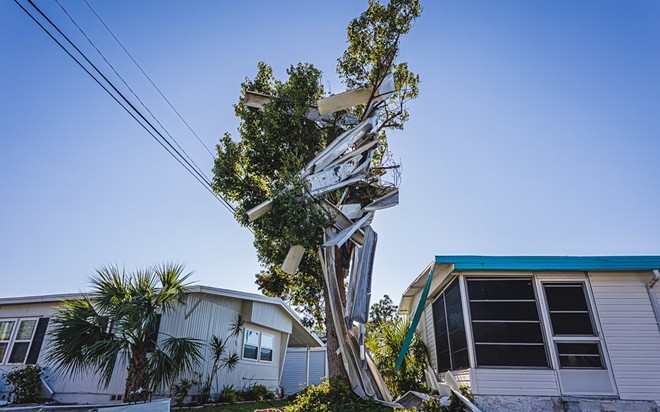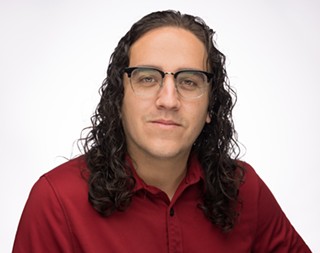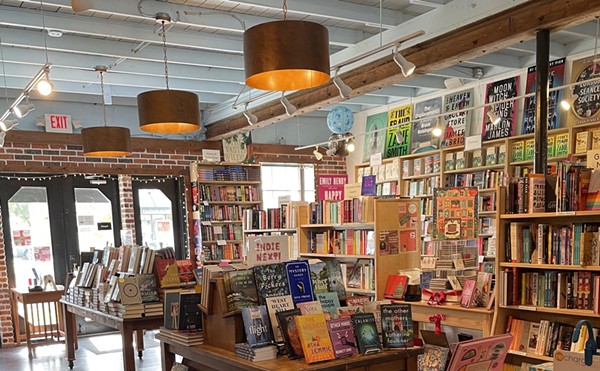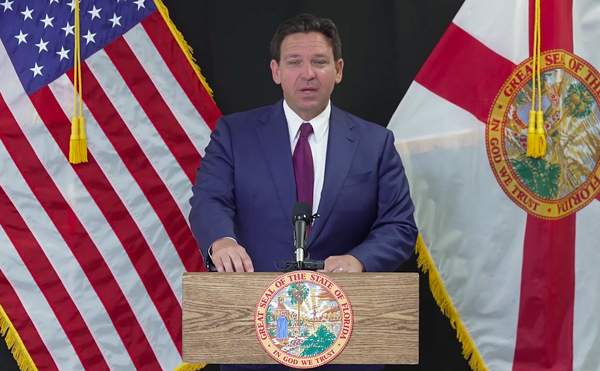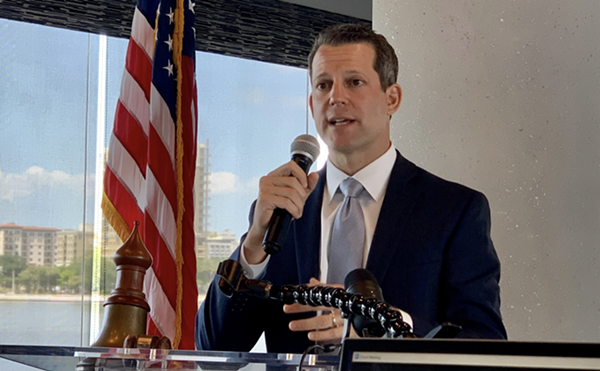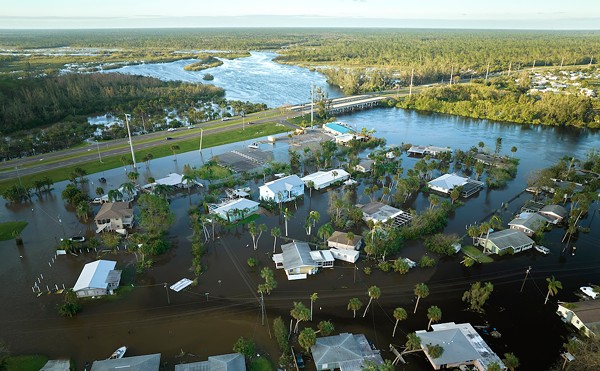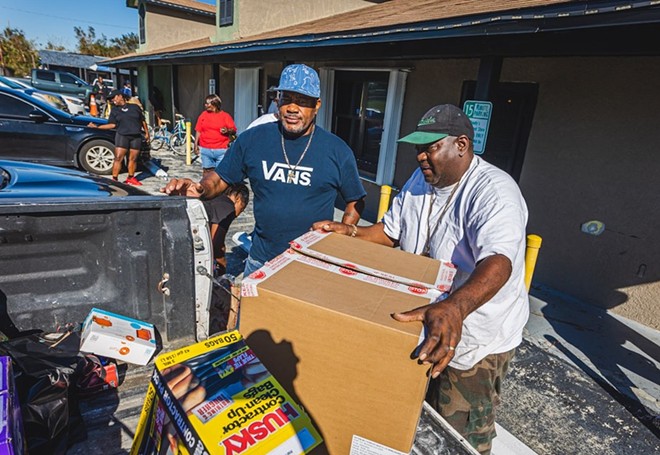
“We got so lucky.”
That’s the common refrain from many who live in Tampa Bay when they talk about the devastation left behind by Hurricane Ian.
But with disasters, the reality is that one person’s solace in being spared is another person’s tragedy.
While millions in our area breathe sighs of relief, clean up debris and get back to their lives, communities just a quick drive south suffer a fate far worse.
I was in Fort Myers, Cape Coral, North Port, Englewood, Venice and Sarasota throughout the weekend delivering supplies, along with several other volunteers from Mutual Aid Disaster Relief (MADR).
Creative Loafing Tampa Bay photographer Dave Decker was also helping out, and documenting the aftermath of Ian. On Saturday, we rode together into Southwest Florida, navigating road closures due to the overflowing Myakka River, and at times, driving straight through bodies of water.
The destruction had us in awe.
In Englewood, roofs and walls were ripped off and strewn around at multiple trailer park communities as people sifted through the remains of their shelters. We gave them fuel for their generators and water for their sweating bodies as they attempted to repair the damage.
The modern world had gone dark around them. Cell phones struggled for reception and the few food stores that were open were filled with people even though most of the shelves had gone dry. Nearby, hours-long lines of cars waited outside of gas stations, hoping for the next refill truck to arrive.
As we visited community after community in Englewood, we heard the same thing over and over again: no one had come to help them.
Several of the trailer parks we visited were mainly older people on fixed incomes, who grabbed Gatorades, snacks and canned food with weary smiles. Handshakes and hugs were exchanged as we talked to people about what they experienced as Ian slammed into their communities just days before.
At Oak Grove Trailer Park, a resident who only wanted to be identified as Joy, said, “You want to see something really wild?”
“It’s over there,” she said, as she pulled up next to me on her pedal tricycle. “Around that bend.”
She was referring to something that Dave and I had already seen on our way into the trailer park.
It was an oak tree, cloaked with pieces of destroyed trailers like an apocalyptic cape.
When I told Joy that we had seen it, she laughed loudly and said a piece or two was probably from her trailer. I told her it was inspiring to see her positivity, despite the circumstances.
“I have to laugh. I’ve already cried enough,” she said.
Still, those who lived in the trailer parks had more secure shelters than people without homes.
Shirley and her dog Denny, who we met in Venice and gave supplies to, had rode out the storm in a public restroom.
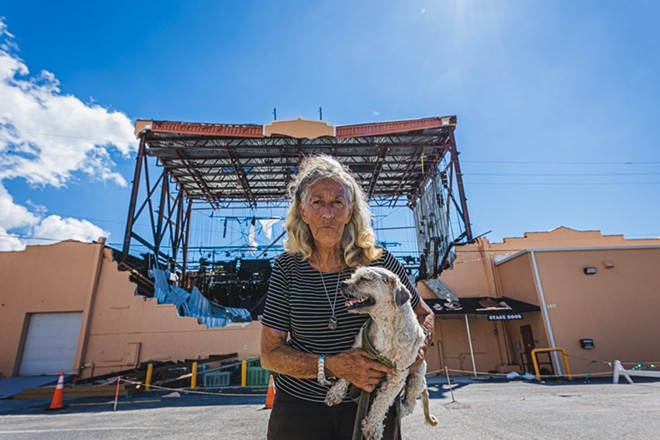
On Sunday, further south in Fort Myers, there were more tears.
The Category 4 hurricane with 155 mph winds hit significantly harder there. Snapped and fallen trees were scattered like matchsticks, many wrapped in power lines. There was no clean water anywhere. Communities were completely ravaged. The bottled water, canned food, baby supplies and hygiene products and gas MADR distributed disappeared in moments.
Those who had roof damage were happy that they still had a roof. But they were hoping it wouldn't rain again soon. Tarps were set up as temporary patches by volunteers.
Just like in Englewood, MADR was the first relief to arrive, we were told.
Dominic Dawson said that all of the relief was on the rich side of town, adding, “On the poor side, the hood, I haven’t seen nothing over here.”
Dawson lives in Dunbar, the historically Black area of Fort Myers, where many fear they will be neglected in the aftermath of the storm.
Marginalized communities are often left to fend for themselves after disasters. And while Ian’s death toll is already estimated to reach into the hundreds, there will be far more deaths if people who need help don’t get it soon.
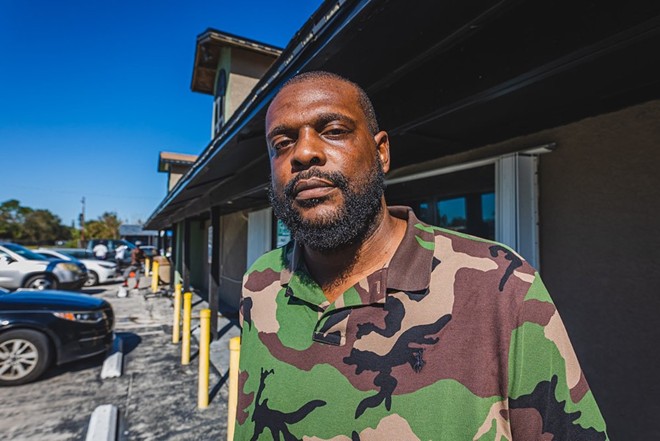
People often die of heart conditions, injury and trauma in the days, weeks and months after a storm. Those with diabetes are left more vulnerable to death, even years after a hurricane. Older people disproportionately die as many people stop paying attention after the storm has passed.
As climate disasters intensify due to climate change, more and more of these communities will need help from their neighbors, because there just aren’t enough government resources dedicated to helping all the people.
And the victims of Ian are just a couple hour drive from Tampa Bay.
People who have lived in the area for a while have probably seen these cities before they were hit by the hurricane, or maybe just passed through on a trip further south. Many have friends and family members living there.
Even now, wellness check requests are coming in to MADR, especially to pay visits to older people who haven’t been heard from. Volunteers from around the country are now headed to Ft. Myers to visit with those in need and bring supplies from the Tampa hurricane relief hub established last week.
Those who were hit hard by Ian are suffering a fate that we only dodged by sheer luck. So when we see that death toll rise, when we see people dehydrated, stranded, starving and suffering—we should see ourselves, too.
Because it’s only a matter of time.
If a future hurricane hits Tampa, people an hour or two north or south of us might be saying to each other, “We got so lucky,” while going back to their normal lives.
I think every one of us in the Bay area would want some help then, just like our neighbors south of us need for the months, and possibly years, to come.

